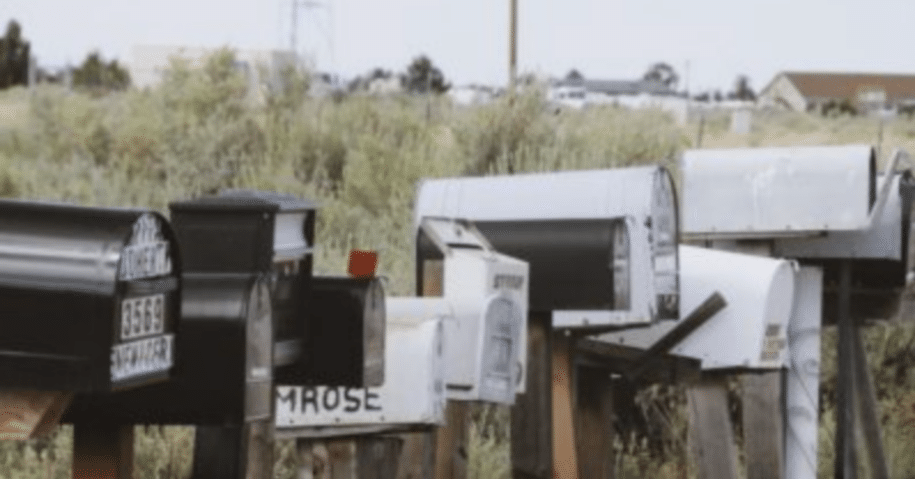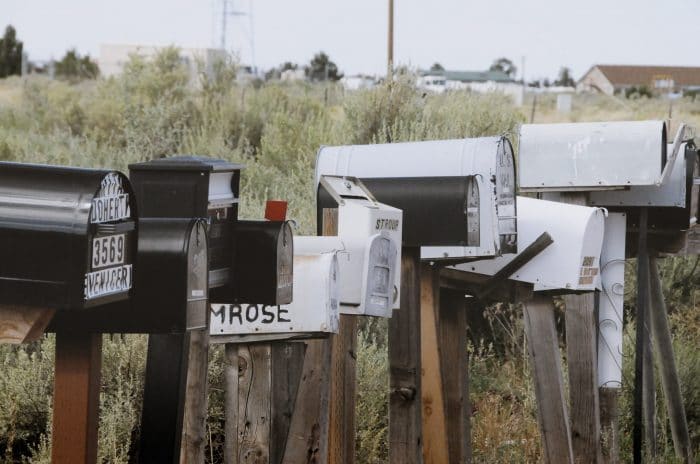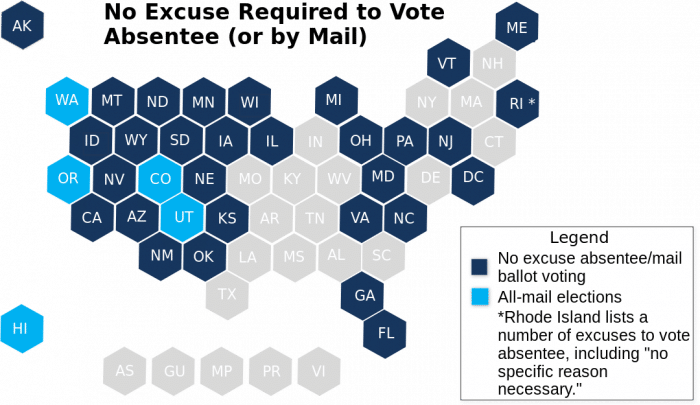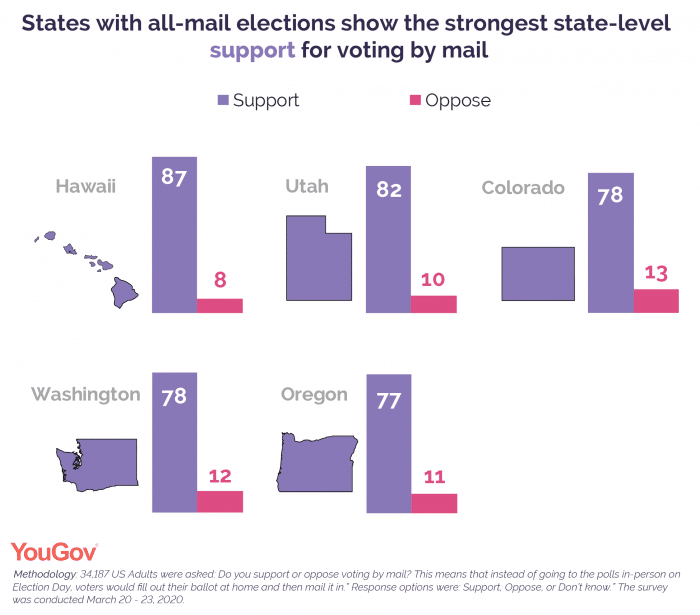How to Navigate the Vote-by-Mail vs. Absentee Ballot Debate
The Difference Between Vote-by-Mail and Absentee
With fewer than 90 days until the 2020 Presidential election, there is increasing chatter about how to hold an election during the coronavirus pandemic. To allow voters a safe option to exercise their right to vote, congress has proposed universal vote-by-mail, and states are moving quickly to an absentee or vote-by-mail ballot system.
Some, however, decry these systems as ripe with fraud. Not since the “hanging chads” in the 2000 Presidential election of Bush v. Gore has the way we vote been so hotly debated.
Some say absentee ballots are okay while vote-by-mail systems are prone to abuse. However, the two are actually different terms for the same thing (they are also called mail-in ballots, advance ballots, mailed ballots, by-mail ballots or, simply, mail ballots).
Absentee voting has been around in some form as far back as the Revolutionary War. But it was during the Civil War where Wisconsin led the charge by giving Union soldiers the right to vote-by-mail. 150,000 cast their ballots and helped President Lincoln win a landslide victory in 1864. In time, the elderly, the sick and others gained the right to cast absentee ballots in most states.
As this typically involved receiving and returning your ballot by mail, states started to refer to the absentee ballot system as vote-by-mail. Today, every state offers some form of vote-by-mail.
Can I Vote by Mail?
To put it simply, it depends. Much like the decision to issue stay-at-home orders in response to COVID-19, it’s up to the states to administer federal elections. The federal government, though, can impose certain requirements.
Today, the Uniformed and Overseas Citizens Absentee Voting Act (UOCAVA) requires all states to allow military and overseas citizens to vote absentee. For everyone else, each state allows for some kind of vote by mail, but the rules vary widely from state to state.
Sixteen states with vote-by-mail require a “valid excuse” for why a voter can’t vote in-person on Election Day. Included in that list are Republican strongholds like Alabama, as well as Democratic safe havens like Vermont. Reasons range from medical emergencies to working the night shift.
In 34 states plus D.C., you don’t have to give any reason to request a mail-in ballot. Five of these “no-excuse” states – Colorado, Hawaii, Oregon, Utah, and Washington – automatically send absentee ballots to all voters.
In case things weren’t complicated enough, “single sign-up” states allow registered voters to join a permanent absentee voter list and have their ballots automatically mailed to them every election. Read the fine print, since some are only semi-permanent and have to be renewed after a couple of election cycles.
Some states have strict vote-by-mail eligibility requirements. The Alabama application for vote-by-mail requires a photo ID. In Mississippi, your application has to be notarized. Many view these measures as a barrier to entry. A 2014 Government Accountability Office report commissioned by Congress found that stricter voter ID laws decreased turnout among all voters, and disproportionately more so among black and young voters.
There are also myriad laws about delivering and collecting mail-in ballot applications. New Mexico requires any applications for an absentee ballot be returned within 48 hours of completion or the collector is guilty of a misdemeanor; altering another’s application will get you charged with a fourth-degree felony.
Dispelling Myths
This year, in a May special election in Patterson, New Jersey, the U.S. Postal Inspection Service informed state law enforcement of a mailbox stuffed with hundreds of mail-in ballots. Two city council members, including one who was a candidate in the election, were later arrested and charged for illegally handling ballots.
Some point to this instance as evidence of the risk of fraud in vote-by-mail systems, while others say its discovery and prosecution is evidence that the system works.
Election law expert Richard Hasen of UC Irvine argues that swinging a presidential election with all the different states’ voting systems would require fraud on such a scale that it would be nearly impossible to pull off undetected.
All states have some system in place to prevent vote-by-mail fraud. 31 states, including populous ones like Texas, Illinois, and Pennsylvania, compare signatures on mailed ballots with the voter’s signature on file. Virginia, Wisconsin and six other states require the signature of a witness (or two) in addition to the voter’s. In Oklahoma and Arkansas, voters must include a copy of their ID or a notary’s signature with their mailed ballot.
See how your state verifies absentee ballots
Another myth is that one party gains an advantage from vote-by-mail. Older and rural voters are big users of vote-by-mail and tend to vote Republican. However, as of June, Florida Democrats had a 302,000-person lead in vote-by-mail registrations.
Further laying to rest the notion of a vote-by-mail party advantage is a Stanford University study published earlier this year. Focusing on elections in California, Utah, and Washington, where voting-by-mail has been conducted on a large scale for years, the study found no partisan advantage garnered from vote-by-mail systems.
The Pros and Cons of Vote by Mail
Let’s start with the cons.
Mail-in elections can significantly increase costs associated with printing. As you can imagine, a state that sends a ballot to every registered voter will need to print a lot more ballots than a state with opt-in vote-by-mail. Additionally, in an attempt to make voting more accessible, some vote-by-mail states provide return postage on each ballot, making the process even more expensive.
Voting by mail can also increase voter errors (producing “residual votes” in election-geek speak) and thus the number of uncounted votes.
Further, it can exacerbate inequalities among some Native American communities that lack regular mail access, as well as citizens who might not have a stable residence.
Okay, so what are the pros?
While voting-by-mail can increase printing costs, it can also save states a lot of money on in-person polling expenses. A 2016 study by The Pew Charitable Trust found that over 70% of counties in Colorado were able to significantly decrease their cost per vote after the state switched to all-mail elections. With so many residents voting by mail, the need for polling stations – and poll workers – plummeted.
Vote-by-mail gives voters a chance to better understand what they are voting for as well – it allows citizens plenty of time to review their ballots and study the issues and candidates. Most would agree that a more informed voter is good for our democracy.
The people who currently use vote-by-mail also vastly prefer it over voting in person. A recent survey conducted by YouGov found that, in states with all-mail elections, voting by mail has staggering support.
Further, although some may find vote-by-mail more challenging because of limited access to mail services, providing it as an option generally leads to greater voter turnout, especially in traditionally low-turnout local and mid-term elections. It also increases voting frequency among voters who often don’t vote when going to the polls is their only option. Finally, it’s important to note that no one is advocating for an end to in-person voting. The goal of expanding vote-by-mail is to provide citizens with options, not take them away.
Apply for Your Vote-by-Mail Ballot Today
In the war against the coronavirus, we can all sympathize with the soldiers of our nation’s history who supported their country but often lacked access to a means for casting a ballot. In the future, we might look back at this time and wonder how absentee voting was ever restricted to a select few, much like how a world before the UOCAVA feels like a distant memory.
At Impactree, our mission is to help you exercise your right to vote and amplify your impact, especially right now. We urge you to take a few minutes to register to vote and apply for a vote-by-mail ballot, then submit your ballot as early as possible. It’s hard to predict what situation we will find ourselves in on November 3rd. But if you act now, you can at least take comfort in knowing that your voice will be heard.
Stay safe, everyone.




